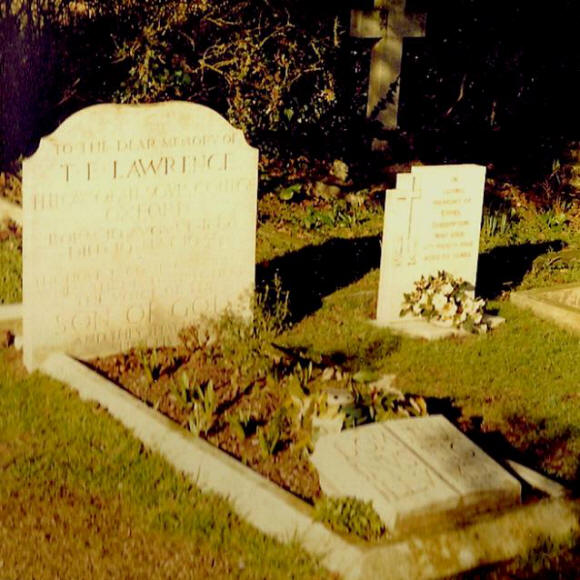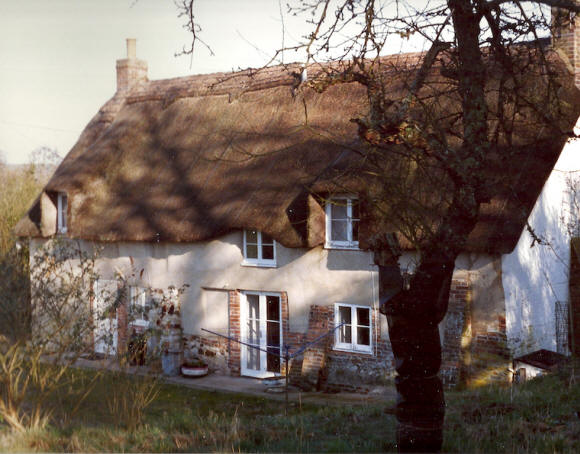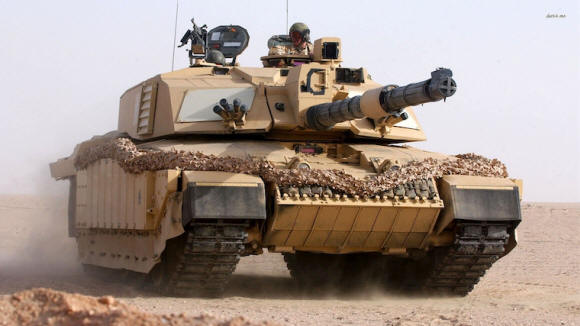|

TE Lawrence's Grave
AFTER TWO
YEARS at Staff College I was given my first staff job at
the Headquarters of the Director of the Royal Armoured
Corps (HQDRAC) in Bovington Camp, Dorset. I had no idea
what this organisation did or how it fitted in to the
bigger picture, but I was just mightily relieved not to
be posted to the Ministry of Defence in London which
would have been total anathema to me. So Dorset it was,
and no bad thing either.
My official job title in typical MoD-speak gobbledy-gook
was SO2 RAC 2a, which meant nothing to me when I got my
posting but which transpired to involve representing
HQDRAC’s views on future RAC equipment procurement. It
was, therefore, more or less exactly what I’d been
looking for, and I found myself working in a very
relaxed HQ with a nice General in charge and sharing an
office with the delightful Robin Goldsmith of the
17/21st Lancers, my favourite cavalry regiment. Both of
us were mildly maverick in outlook and so we got on very
well.
But first I had to get my accommodation sorted out. The
Officers’ Mess at Bovington was a classic example of all
that was wrong with 1960s architecture and was (and
still is, perhaps?) rather like a tower block in a sink
estate. Whilst busy during the week and comfortable
enough, the weekends saw it deserted and a soulless and
depressing place to be far from home. So I needed to
find somewhere else, and fast.

Crawford Cottage in Moreton
After a
brief flirtation with a small flat in the nearby town of
Wareham I was lucky enough to be able to rent a thatched
cottage in the miniscule village of Moreton, a stone’s
throw from my new office. It had three bedrooms but I
decided I wanted to live there on my own which suited me
down to the ground. Lots of friends came to stay over my
two year time there, but I was the only permanent
fixture resident wise.
Perhaps the most notable thing about Moreton is that it
is the final resting place of T E Lawrence, aka Lawrence
of Arabia. He had been killed in motorcycle accident in
1935 whilst stationed with the Royal Tank Corps at
Bovington (as a private soldier) and living in the
cottage known as Clouds Hill, now run by the NTS. Many a
time I visited both his grave (main picture) and
cottage, hoping perhaps for some military inspiration.
Moreton church also had some lovely engraved glass
windows by Whistler, and was bombed by the Luftwaffe in
1941 when they were trying to hit the camp.

Moreton Church
Aside
from the tiny Post Office and general store directly
opposite my cottage, plus a few other buildings in
similar vein, there wasn’t much else in the village to
capture the attention, apart from its general rural
charm. Just a mile or so down the road, though, lay the
Seven Stars pub, which became a frequent and popular
place of gathering for like-minded souls like me. Many
an evening there passed pleasantly enough over a bottle
or two of their renowned “Steam Beer”, which came from a
brewery in Newquay if I remember correctly. Of course we
never drove home via the deserted country roads
thereafter.
My job was really interesting and I thoroughly enjoyed
doing it. The biggest project by far during my time
there was the Chieftain Replacement project; our old
tanks had already been up-armoured a couple of years
before when we realised – oops – that its armour would
no longer keep out the most modern iteration of Soviet
tank gun ammunition, as the Iran-Iraq War of 1980-88 had
amply demonstrated. But the old girl was now at the end
of the road and we needed something newer and better. I
have written elsewhere about how I think the eventual
replacement chosen, Challenger 2 (pictured below), was
the wrong choice[1], and there’s no need to repeat it
all again here. It’s just a bit galling to note that the
current proposed Life Enhancement Programme for
Challenger 2 in its turn may include some of the items
that we recommended it should have in the first place,
some 35 years ago!

Challenger 2 Tank
The
problem seemed to me to be, if you’ll allow me one of
those sweeping generalisations of which I am so
inordinately fond, that the senior officers making the
decisions weren’t nearly half as clued up on technical
matters as we Young Turks out of Staff College were, and
they were easily impressed and swayed by those they
deemed senior and more important than us. At least our
General had the decency to call us “his Young Turks” but
he still didn’t follow our recommendation on this one.
Hey ho.
There were a myriad of other equipment programmes which
crossed our decks, too many for me to remember most of
them. I do recall the Bowman tactical communications
system (radios to you and me) which we worked on and was
due in service in 1988, so we were told. It actually
entered service in 2004, hugely delayed and hugely over
budget because people couldn’t make their minds up, and
accordingly verging on obsolescent when it arrived with
the troops.
Tank heaters were another, minor, project. Chieftain and
Challenger1 tanks had no heaters in them and
consequently a concomitant part of being a tank soldier
was to spend most of your time on the panzers freezing
to death. Believe it or not, one of the reasons the
procurement of heaters was resisted by the hierarchy was
the fear that “they might make the boys go soft”. A
better argument was that they might in the dark, and
indeed in the light, when the opposition turned their
thermal imaging (TI) sights on them, which was probably
fair enough. Another flawed argument militated against
body armour for tank soldiers (“because they have armour
already, stupid”) which sadly had fatal consequences for
one RTR commander in Iraq.
Occasionally I had to attend meetings at the MoD in
London, which called for an early start from the little
rail station at Wool in Dorset. Every time I went I
thanked the Lord I had never been pinged for a London
staff post. The meetings were in general interminably
long and seldom reached any firm conclusions, and held
in a cloud of cigarette smoke is a grey, scruffy office
in a grey, dilapidated block round the back of a railway
station. Fun they were not and I couldn’t wait to get
back to sleepy Bovington. I also sometimes accompanied
the General in some of his visits to various units of
the RAC as they fired on the nearby Lulworth Ranges,
with much saluting, crashing of boots, and nervous
bonhomie involved.
Defence budgets were always tight, as they still are
nowadays, and we were forever being asked to find
savings in existing programmes to help fund others. The
usual methodology for this was to spread the payments
for various bits of kit over a longer timeframe, which
might fix the annual budget figures but usually meant
the total expense was greater. Then,
counter-intuitively, around the end of the financial
year in February/March, a harassed MoD staff officer
would phone and ask if there was anything we could think
of quickly that we wanted as the budget was underspent!
If you didn’t spend your annual budget it might get cut
the next year. What a way to run an operation, but I
suspect it was ever thus and probably still is. Don’t
let Dominic Cummings find out, that’s all I will say.
I have to admit, though, that I really did enjoy my time
in Dorset, and I also think the job I did was a useful
one. My colleagues and I didn’t always get our points
across or our views accepted, but I certainly didn’t
think our efforts were in vain. At the end of the day,
we did our best to ensure the RAC got the best equipment
it could get in straitened financial circumstances. I
was able to apply many of the lessons learned there when
I returned to a similar job in an operational
headquarters during the First Gulf War, but that’s for a
different episode.
My two years was up all too quickly, and I looked
forward to rejoining the #BARITWE* in my new role as
squadron leader. And that’s what I’ll be writing about
in the next episode.
* Best Armoured Regiment In The World Ever
To come in Part 17; back with the Regiment and to Cyprus
with the UN. |
